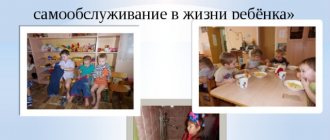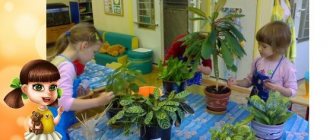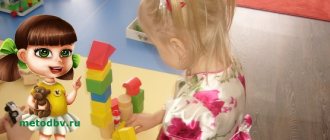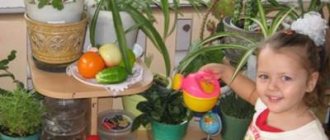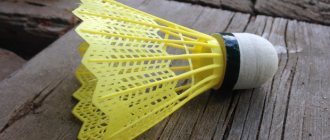Contents of physical education activities for children of different age groups.
Physical education activities, types, meaning.
Contents of physical education activities for children of different age groups.
Physical education is one of the forms of active recreation for children. The introduction of physical education leisure activities into the practice of a preschool institution makes it possible to realize the child’s natural need for movement and to compensate for the deficit of physical activity. The content of leisure time is physical exercises familiar to children, but carried out in a playful form, in the form of fun activities and attractions, which creates a positive emotional background that has a beneficial effect on the child’s body. During physical education, children’s motor skills are consolidated and physical qualities are developed. Leisure activities help to develop in children a sense of collectivism, camaraderie, mutual assistance, determination, courage, discipline, and organization.
Physical education leisure in a preschool institution is carried out 1-2 times a month, starting from the 2nd junior group. It is recommended to conduct it in the evening (16-17 hours), on days when there are no physical education classes. In summer, leisure activities can take place in the first half of the day (9-11 hours).
Physical education activities are carried out both outdoors and indoors. The duration of leisure time ranges from 20 to 40 minutes depending on the age of the children. Leisure time should not be prolonged, as physical and emotional fatigue negatively affects children’s health. Younger preschoolers still find it difficult to carry out simultaneous, joint activities in a large group, so at this age leisure time is spent only with children of one group. In older preschool age, it is possible to combine two parallel age groups.
At the beginning of the school year, a long-term plan for the preschool institution is drawn up, which includes physical education activities. The topic of physical education activities, timing, location, participants, and those responsible are outlined. Taking as a basis the program material on the upbringing and training of preschool children, when planning leisure activities, the head of physical education must proceed from the conditions of his preschool institution, the age and individual characteristics of the children, their experience, and preparedness.
Due to the fact that physical education leisure is based on physical exercises familiar to children, games learned in physical education classes, and walks, when planning leisure time, the tasks are no longer of learning, but of consolidation and improvement. And health-improving and especially educational tasks come to the fore. Unlike physical education classes, a complex technological chain of preparatory and lead-in exercises is not required. However, one must try to ensure that the movements included in leisure time are aimed at the harmonious development of various physical qualities, and the work of different muscle groups alternates and the load is regulated.
Physical exercises included in leisure activities should be well mastered by all children. Children who find it difficult to perform one or another exercise should be given individual additional lessons.
Leisure time differs from physical education in all sorts of surprise moments (introducing a character, receiving a letter from someone with a task, presenting small gifts, prizes).
When spending leisure time, the child performs various motor tasks. He behaves more directly than in physical education classes. The relaxed and natural use of motor skills ensures the expressiveness, artistry, and aesthetics of his movements. Physical activity is the best way to develop relaxed and beautiful movements. Moderate muscle load improves well-being and lifts your mood.
Physical education leisure develops thinking, imagination, determination, and a culture of feelings (for example, they teach a child to restrain his feelings and desires, to show determination). It develops in children the ability to move to music, an ear for music, and memory. Physical education does not require special training. It is built on familiar material. Entertainment is provided both with one group and with groups of children close in age. In leisure time, the teacher takes an active part: he gives commands for the beginning and end of a game or motor task, sums up the results, is the main judge of the competition and creates an emotional atmosphere with his interested attitude to what is happening. Paraphernalia plays an important role in maintaining a joyful mood and creating positive emotions: emblems, medals, pennants, scoreboards, etc.
In terms of content and composition, physical education leisure can be different: it is based on familiar games and game exercises, on elements of sports games (basketball, hockey, football, tennis, etc.), on exercises in basic movements (running, jumping, riding bicycles, scooters, roller skates, jumping rope). This leisure option is a kind of test for the child in mastering the listed types of movements and mastering the correct technique of movements. Physical education leisure can be based mainly on relay race games such as “Fun Starts” or “Call of the Jungle”. This leisure time includes movements learned in physical education classes.
Musical leisure is interesting. The child practices performing movements with objects (balls, ribbons, hoops, etc.) and rhythmic exercises. Such leisure develops creativity, initiative, beauty, grace and expressiveness of movements.
When developing a physical education program, the following points are taken into account:
- The content of the program is consistent with the completed educational material;
- Games and exercises varied in motor content and motor characteristics are used;
- The placement of games and exercises in leisure activities meets the rules of dosage: physical activity gradually increases, and in the last task decreases;
- After relay games or other tasks that excite children, riddles, poems, games of low mobility, round dance games are planned, providing a change of activity, but not reducing the emotional uplift;
- After frontal games of great mobility, tasks follow in which more resilient children act;
- Mandatory musical accompaniment;
- Creating game situations in which the child must make his own decisions;
- Formation of positive emotions, including through the inclusion of skits, dramatization, guest heroes of familiar fairy tales and cartoons.
When developing leisure scenarios, it is necessary to take a creative approach to choosing a topic and form of implementation.
Based on the theme, leisure activities can be divided into 4 main groups.
- Entertaining. “Fun Starts”, “Petrushka’s Fun”, etc.
- Cognitive. "Sports Quiz", "Fort Bayard".
- Moral and patriotic. “Dad, mom, I am a sports family”, “Folk fun”
- Developing the habit of a healthy lifestyle. “Sun, air and water are our best friends,” “Cleanliness is the key to health.”
Physical education leisure and holidays allow, without reducing the general emotional state, to stimulate the activity of each child, taking into account his individual capabilities; take a differentiated approach to assessing the results of his actions; not to disappoint with comments and criticism, but to give the opportunity to experience a pleasant feeling of joy from the movements he performed, and to rejoice in the successes of others. When spending leisure time and holidays, I involve children in direct participation in various competitions and competitions. At the same time, children behave more spontaneously than in physical education classes, and this looseness allows them to move without much tension. It is more natural to use those motor skills and abilities that they have already firmly mastered, to show a kind of artistry and aesthetics in movements, which is of no small importance for the development of the personality of each child. Children also participate in leisure activities. Topics and content of leisure activities are discussed with children of senior preschool age, gifts for spectators, elements of costumes, and decoration of the hall are made.
When spending leisure time, much attention is paid to the costume of the heroes. This helps in a matter of minutes to set up children, attract their attention, surprise, stun, depending on the chosen image.
Musical accompaniment is thought out using recordings of children's favorite songs from children's cartoons, popular pop groups, soloists and classical music.
It is important to attach great importance to the artistic expression used in the script. Together with the teachers, poems, songs, and riddles needed on the topic are selected. Some of them are taught by children, some by the presenter, as well as characters invited to the holiday.
Such organization of leisure allows children to achieve complete liberation, manifestation of their independence, imagination, creativity in the choice of movements, and in the feeling of muscular joy.
When spending your leisure time, you can use non-traditional equipment and inventory, selecting it according to the chosen topic, for example: “plumbing” from plastic bottles, an obstacle course - coffee cans, a fun relay race with water - eggs from Kinder Surprise, bumps from foam rubber , flowers made of batting, walking paths made of oilcloth, etc.
When spending leisure time outdoors, it is best to use the natural landscape and sports equipment made from waste material (tires of different sizes, logs). All this arouses interest, joy, and desire in children to move and participate in the game.
In the case when children of different ages are united, it becomes possible to teach children in the process of communication, to understand each other, to empathize with failures, to take care of older ones about younger ones, and to rejoice at successes. In this case, the activities of the spectators must be thought through. This could be participation in a warm-up, a general outdoor game, dancing, performing certain movements while sitting still. It is important not to reduce the emotional uplift of leisure until the end of the action. Prizes and treats will help with this, encouraging the activity of children, because every child is so happy about a small gift.
A significant place in the program of physical education for older children is occupied by games and game tasks of a competitive relay race type. Relay races allow players to more clearly sense each other’s presence, teach them to take into account the gaming behavior of their partners and interact with them. Psychologists, answering the question: “How does success come?”, answer that it can be achieved through special training. And relay races and sports games are a universal means of “training for success,” the main advantage of which is that children can make mistakes and correct their mistakes.
In the summer, it is better to spend your leisure time in the fresh air, which is, of course, very healthy. This optimizes the physical condition of children and strengthens their body. Children come into close contact with natural materials and deeply recognize their native land.
One of the forms of active recreation for children and adults is a physical education and sports festival. It involves a variety of physical exercises combined with elements of dramatization, choreography, singing, quizzes, competitions and attractions.
A holiday is always joy and fun. His anticipation alone can evoke positive emotions in a child. This makes the holiday an indispensable means of preventing and even treating various health disorders. It has long been known that a good mood and a life-affirming mood have a high healing power.
The most important result of the holiday is the joy of participation, victory, communication, and joint activities.
The process of preparing for the holiday unites the children's team, teachers and parents with unity of purpose and common goals.
During any holiday, a number of tasks are solved, but at the same time the main task is set, in accordance with which the theme and content, techniques and methods of work are selected.
The culmination of any holiday is a surprise moment: the unexpected appearance of a fairy-tale character and the performance of a short performance. In any case, the performance should be spectacular and fun, accompanied by music and unusual sounds. At the end, it is appropriate to hold a general game of medium mobility (preferably in a circle), organize a mass dance.
The award ceremony should be solemn and fun. Pennants, emblems, souvenirs should be placed in the most honorable place in the group. Such a “victory corner” is a source of pride for the child. Here you can place photographs and drawings on the theme “Our holiday”. This will allow children to develop a strong interest in physical education and their achievements in sports, which is one of the most important conditions for developing motivation for a healthy lifestyle.
It has become a good tradition for the garden to photograph holidays using photo and video cameras. After the holiday, children and parents look at bright photos and video materials with interest. The memory of participating in the holiday remains with the children for many years.
Literature
1. Stepanenkova E.Ya. Theory and methods of physical education and child development. - M.: ASADEMA, 2006.
2. Stepanenkova E.Ya. Physical education in kindergarten. Program and methodological recommendations. - M.: Mosaika-Sintez, 2006.
3. Education and training program in kindergarten. Ed. M.A. Vasilyeva, V.V. Gerbova, T.S. Komarova. - M.: Mosaic - Synthesis, 2005.
4. Lysova V.Ya., Yakovleva T.S., Zatsepina M.B. Sports events and entertainment for preschoolers: Scenarios: Senior preschool age. - M., 1999.
